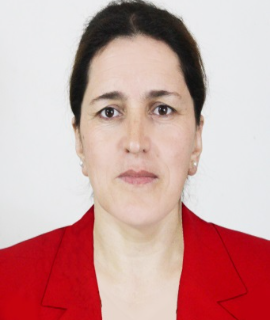Title : Medicinal use of sea-buck thron in Badakhshan region, Tajikistan in the condition of climate change
Abstract:
In Central Asia, Badakshan region which is geographically located at the junctions of Asia’s mightiest mountain ranges across Tajikistan and Afghanistan, has great biodiversity. The area’s diverse habitats, influenced by various mountain ranges and high altitudes, support the unique flora and fauna. Badakhshan region remains the major site for natural Sea buckthorn resource. Se-buck thorn is spreaded here from subtropical zone of Darvaz ( 1500 m a.s.l) until Eastern Pamir (3800 a. s. l). Research on sea buckthorn in Badakhshan dates back to the 20th century. According to Glazunova et al., (1984) specimen growing in high altitude (3430m a.s.l) have more ascorbic acid (431-508 mg/100 gm) than the ones growing in lower altitude (2503 m a.s l.- 377 mg/100 gm). S. Musoev (1997) shows that key sea buckthorn resources are found in districts like Vanj (75.09 t), Rushan (82.83 t), Shugnan (240.5 t) Ishkashim ( 193.93 t) districts. However, after the collapse of the Soviet Union, no further research was conducted on Tajik sea buckthorn. The current study is crucial, as Badakhshan remains the main natural site for sea buckthorn growth. It shows that over 55% (4,250 ha) of the region’s forested areas are covered with sea buckthorn, with around 10 tons harvested annually. A survey of 270 respondents revealed that 80% of the sea buckthorn is used in medicine, 10% in food, and 10% in cosmetics and as firewood. Locals use sea buckthorn to treat hypertension, digestive problems, and skin diseases. Sea-buck thorn products have great demand at local and national markets. In the condition of Badakhshan se-buckthorn grows in most remote areas and is the only alternative medicine and income for pro-poor communities in the condition of climate change. However, in some areas, economic challenges have led to resource degradation, highlighting the need for better cultivation and harvesting practices.


